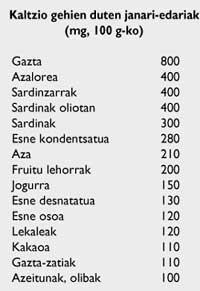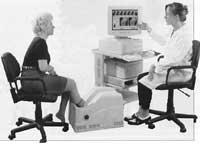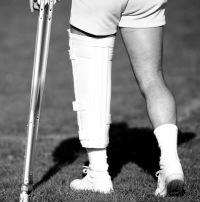Frequently asked questions about osteoporosis
1999/08/01 Agirre, Jabier - Medikua eta OEEko kidea Iturria: Elhuyar aldizkaria

According to the latest studies in developed countries, half of women over 45 years of age and one-third of men have suffered some fractures of osteoporosis. And most surveys state that 90% of women aged 40 or older in Spain, despite being informed of the disease, more than half do so as a fundamental consequence of the aging process. Exercises and other measures that can be carried out to prevent their appearance are not taken at the time. Therefore, in this case we will also treat on this occasion the different aspects of this great health problem that interests us all.
A survey reveals that between 30% and 50% of patients who often reach the doctor (usually the traumatologist, since rheumatologists are not very easy to catch) with symptoms such as rheumatism, are affected by osteoporosis. From this point of view a series of questions are raised to answer the average citizen and some of them in this article.
Is it more common among women than other rheumatic diseases?
Yes, it is much more common in women than in men, as with rheumatoid arthritis.
What is the effect of inheritance?
The onset of osteoporosis is influenced by factors such as menopause, lack of physical exercise, scarcity of products or foods containing calcium, etc. Inheritance, on the other hand, has a great influence and some experts consider that the weight of genetic predisposition is up to 60%.
How is the disease diagnosed?
As osteoporosis can be defined as a decrease in bone mass, the only way to diagnose it is through densitometry techniques, that is, to measure bone density. For this there are various techniques, x-rays, ultrasound, etc. using.

Can you become a useless person?
In some cases yes. It depends on the fractures suffered by the person, their location and the possibilities of treating them. But it will always affect the quality of life of the patient.
Some have pain. How to avoid it?
Osteoporosis does not hurt on its own. But bone fractures that can occur from the disease do cause pain. Avoiding breakages is avoiding pain.
Will the osteoporotic person have another type of rheumatism?
Not necessarily, but it may happen that you have some other locomotor disorder (i.e., bones, joints, etc.). ), regardless of previous osteoporosis.
Can it be associated with other diseases?
Yes, of course. Osteoporosis is usually a frequent complication of rheumatoid arthritis, stematous lupus, certain liver conditions, endocrine diseases, etc. It can sometimes be due to prolonged, uncontrolled treatments with cortisone.
What is this treatment with calcitonin?

Osteoporosis is due to the inhibition of bone producing cells (osteoblasts) or those that decrease bone (osteoclasts) have increased activity.
Calcitonin acts on the action of osteoclasts, inhibiting these cells, but without affecting bone obtaining cells. Calcitonin is effective in all types of osteoporosis and has no contraindications, unless its price is expensive.
On the other hand, as menopause approaches, osteoporosis becomes particularly important in women's lives. The hormonal changes that occur at this time accelerate the process of bone demineralization. Osteoporosis is a process that occurs inside the bone, because the physiology of the bone has become unbalanced (it further decreases or destroys the bone that produces it). Hormones are important but not essential in this process.
Bone volume increases between 30-35 years and begins to shrink from 35 (before menopause). Therefore, prevention should not begin in menopause, but from childhood, encouraging healthy lifestyle habits.
What is hormone replacement therapy (O.T.H.)
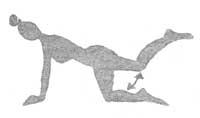
In menopause, and from there, it is about applying to women hormones that are no longer produced, O.T.H. So that they continue to have the beneficial effects that these hormones get by themselves in the treatment that is done. The current challenge is to increase the benefits of this treatment and reduce the risks.
Is it suitable for all women?
It is necessary to particularize each case since in all patients the symptoms do not appear in the same way. Rather than supplying hormones, it is a question of recommending a complete model of quality of life, measuring doses well.
Does it require additional study?
Technical service Initial the woman receiving it should request a basic review (cytology, colposcopy, ultrasound, analytical, hormonal levels, mammography and even bone densitometry). After the commissioning of the treatment a control will be carried out at 6 months and from there an annual control. The other complementary tests will be prescribed by the doctor after the patient's evolution has been observed.
What benefits does this attract have?
When hormone replacement therapy is convenient, it produces alterations such as neurobegetative disorders (itobeharras, sweating, headaches, heart beats, insomnia), psychological (nervousness, decreased libido, lack of self-esteem, etc. ), corresponding to the urinary system, or also genital. The treatment strengthens the elasticity of the skin.
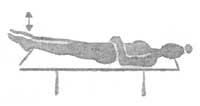
However, the main consequences of osteoporosis are observed in the consultation of the traumatologist. As the bone loses mass, they become more fragile and break for any reason. Due to the age and special conditions that these people have, fractures that usually appear due to osteoporosis require frequent and intense hospital admissions (mainly hip), people who will lose great autonomy. So prevention is also very important.
Where do osteoporosis fractures usually occur?
Wrist fractures usually occur in women around 55. Another area most affected by osteoporosis is the spine by age 65. In many cases small fractures of the spine are not painful, so in many cases patients do not even notice and remain untreated. However, the most serious fracture, the hip fracture, occurs around 75 years.
Are these fractures serious?
In case of bone fracture, a sign of osteoporosis already consolidated. Also, you have to take into account the age of these people, so it will take longer to recover. Depending on bone density, surgical treatments can be very effective, but do not forget that in cases where the fracture requires a long immobilization, this is a muscular atrophy that makes mobility even worse.
Is it possible to prevent fractures?
An early diagnosis should be made with people at risk of osteoporosis to maintain the progress of the disease and prevent breakage.
Is there a healthier lifestyle?
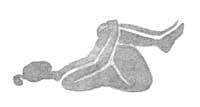
Several factors increase the risk of falls and fractures in people affected by osteoporosis. We can mention sensory defects (loss of vision, hearing or feeling of balance), which are also increased by age, the obstacles that they usually find in everyday life (escalators, slippery floors, sidewalks in bad condition, revolving doors, …), as well as shoes inadequate for a certain floor and for the age of the user (thin and smooth soles, nor heels…).
Does posture or sedentary lifestyle have to do with fractures?
Postures not so much, but sedentary lifestyle does (to the point of being one of the main risk factors for osteoporosis and fractures). Several studies show that when post-menopausal women perform proper exercises they often lose less bone mass. Smoking (one or more packs a day), excessive alcohol or caffeine intake is also a negative factor.
Is exercise mandatory?
It is highly recommended. The best remedy of osteoporotic is exercise, which helps to fix calcium in the bone and allows to prevent the loss of bone mass.
Is any exercise suitable?

Not all. First of all, it is necessary to take into account the age and characteristics of the person who is going to do the exercise: the same cannot be recommended for older people, overweight, with some cardiovascular problem, with limited mobility levels, etc.
And passive gymnastics or massages?
Always with the consent of the specialist and when carried out by qualified professionals, they should not cause any problems, especially in people with reduced mobility.
Are there medicines to prevent breakages?
Yes, but it will always be a specialist who chooses the right medicine in each case. Precisely to avoid extra-vertebral fractures in older women, studies have been published that demonstrate the efficacy of calcium and the administration of vitamin D3 against nutritional failures. Studies with the drug Alendronate also show that bone mass increases and that the risk of fractures decreases considerably. This is the most appropriate treatment for the moment for post-menopausal women when osteoporosis has advanced.
Eating is not only necessary to live. Eating well is the best way to maintain the overall state of our body and health.
Can osteoporosis be prevented with the diet?
Yes, but acting throughout life (in childhood, puberty, after menopause and even in old age), with adequate nutrition and other recommendations. It is not possible to cure the disease (osteoporosis) only with food.
What foods are important for their calcium content?

There are many foods that can give calcium to our body, both animal and plant. But especially dairy products are the main source of calcium. Milk is essential and cheese stands out in derivatives. In addition, eggs (the best integers), raw oysters, oatmeal, white bread, whole wheat, cabbage, spinach, etc.
How is calcium absorbed in the body?
It is produced in the digestive tract by vitamin D. This vitamin (and more specifically provitamin D3 or cholecyciferol) is transformed into 1,25 dihydrocholecalciferol (active ingredient) through a series of consecutive reactions in the liver and kidneys, caused in the skin by ultraviolet rays of the sun.
At what age should I start taking calcium?
The most important thing is to have adequate bone mass, which occurs between childhood and puberty. Then we have no choice but to reduce bone mass or try to stop the process of osteoporosis.
Should we take the same amount throughout life?
No. In childhood it is important that the diet has an adequate amount of calcium (2-3 glasses of milk a day) and in puberty also a liter. (1,200 mg). Pregnant women and breastfeeding women should increase their calcium intake in the diet. And after menopause it is recommended an amount equivalent to 5 daily forest milk. It is advisable to add vitamin D additives from the age of 70.
Dietary additives, yes or no?

Additives, usually calcium or vitamin D, will only be given when these substances are below normal or suspected. But always, in addition to a balanced diet, it is recommended to exercise, take the sun in moderation, not smoke and be very careful with alcohol. The mechanism by which tobacco and alcohol facilitate the onset of osteoporosis has not yet been fully resolved. With the data provided by the statistics, the most likely to suffer osteoporosis is women, white or yellow race, thin and small corpulent. She leads a sedentary, smoker life that drinks too much coffee or alcohol. On one or more occasions in his life his size has been low in calcium.
Other risk factors include a family history of osteoporosis, early menopause, as well as spontaneous or natural menopause (estrogen levels decrease in the blood), a relatively long, anorexic or bulimic immobilization period (or its previous history), rheumatoid arthritis or, finally, being older than 75 years.
Exercises to prevent osteoporosis
- Sitting, flexing the arms glued to the chest and pulling the shoulder back 10 times keeping the posture for 5 seconds.
- With your hands on the nape, repeat the previous exercise 10 times.
- On cushions, with cushions on the floor and lying upside down, lift the head and trunk. Repeat 10 times.
- Straight arms, straight back. Raise your legs back, count 5 seconds, relax, so up to 5 times with each leg.
- Lying down, raise your legs and keep 5 seconds up. Repeat 10 times.
- Lying on your back, bend your legs over your chest. Keep this position by stretching the thigh muscles for 5 seconds and then relaxing. 10 times.
- In prolonged supine decubitus with legs and thighs on the ground, raise the parallel arms above the head and stretch contracting the belly. Hold for 5 seconds and relax. Perform 20 reps.
- Lying on the back, legs and arms bent. Strength with shoulders and knees against the ground: lifts the trunk and contracts the thighs, buttocks and abs. 10 repetitions.
- Lying on one side and legs extended, climb and decay 10 times with the leg up. Then with the leg on the other side, placing the rib on the other side.
Photorobot woman osteoporosis
- White and Asian people have a higher risk of osteoporosis than black people.
- People of low size, or with a slender composition, have finer skeletons, bones are less strong and therefore tend to have greater demineralization.
- Abnormal women have very low bone density.

Gai honi buruzko eduki gehiago
Elhuyarrek garatutako teknologia



